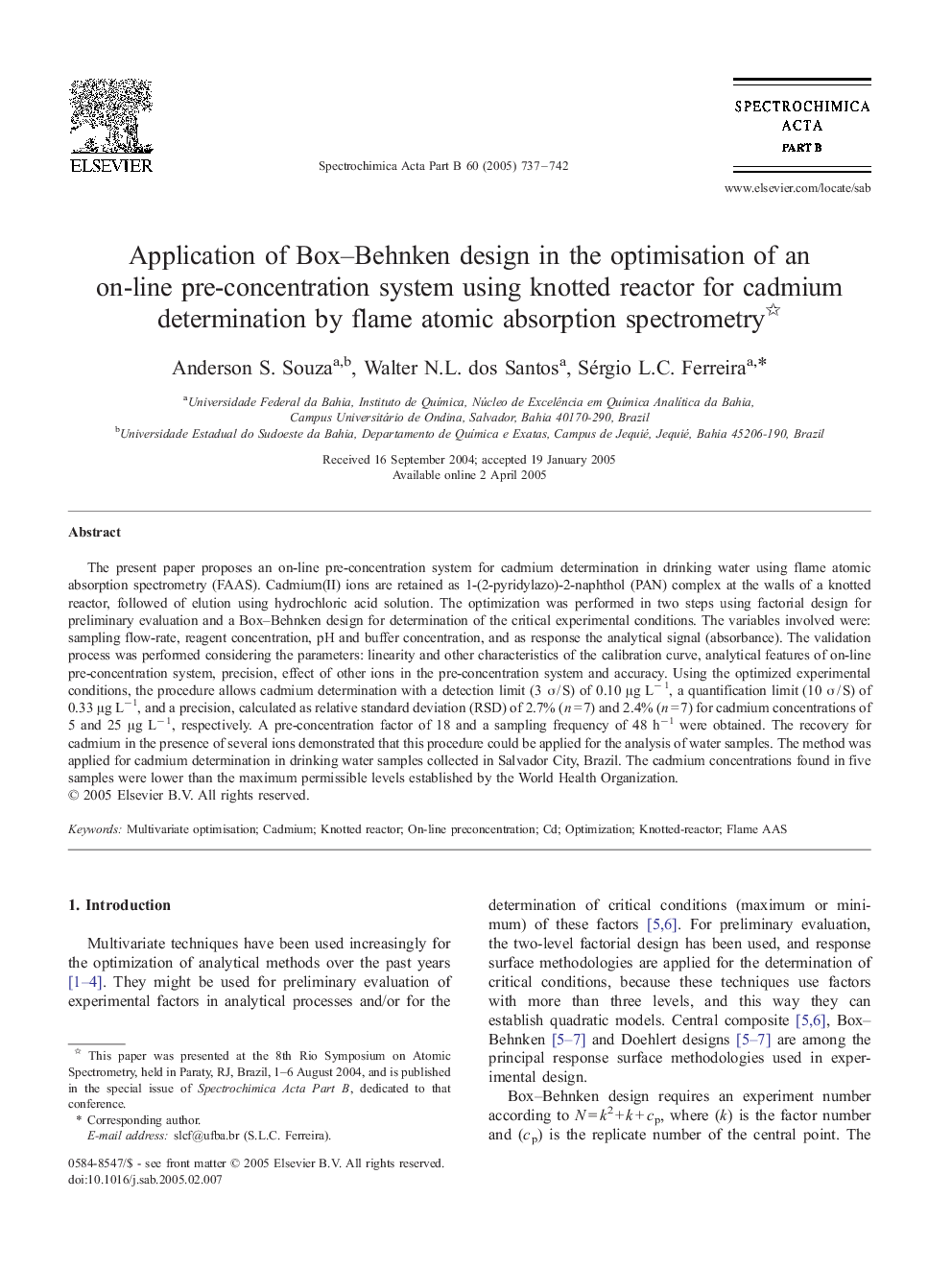| Article ID | Journal | Published Year | Pages | File Type |
|---|---|---|---|---|
| 10559112 | Spectrochimica Acta Part B: Atomic Spectroscopy | 2005 | 6 Pages |
Abstract
The present paper proposes an on-line pre-concentration system for cadmium determination in drinking water using flame atomic absorption spectrometry (FAAS). Cadmium(II) ions are retained as 1-(2-pyridylazo)-2-naphthol (PAN) complex at the walls of a knotted reactor, followed of elution using hydrochloric acid solution. The optimization was performed in two steps using factorial design for preliminary evaluation and a Box-Behnken design for determination of the critical experimental conditions. The variables involved were: sampling flow-rate, reagent concentration, pH and buffer concentration, and as response the analytical signal (absorbance). The validation process was performed considering the parameters: linearity and other characteristics of the calibration curve, analytical features of on-line pre-concentration system, precision, effect of other ions in the pre-concentration system and accuracy. Using the optimized experimental conditions, the procedure allows cadmium determination with a detection limit (3 Ï / S) of 0.10 μg Lâ 1, a quantification limit (10 Ï / S) of 0.33 μg Lâ1, and a precision, calculated as relative standard deviation (RSD) of 2.7% (n = 7) and 2.4% (n = 7) for cadmium concentrations of 5 and 25 μg Lâ 1, respectively. A pre-concentration factor of 18 and a sampling frequency of 48 hâ1 were obtained. The recovery for cadmium in the presence of several ions demonstrated that this procedure could be applied for the analysis of water samples. The method was applied for cadmium determination in drinking water samples collected in Salvador City, Brazil. The cadmium concentrations found in five samples were lower than the maximum permissible levels established by the World Health Organization.
Keywords
Related Topics
Physical Sciences and Engineering
Chemistry
Analytical Chemistry
Authors
Anderson S. Souza, Walter N.L. dos Santos, Sérgio L.C. Ferreira,
